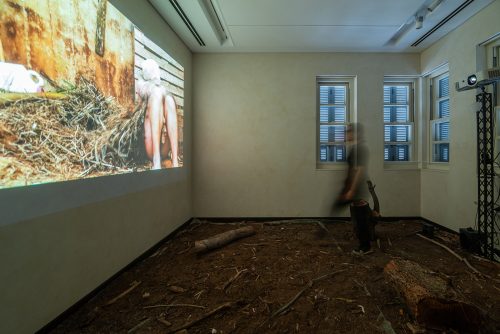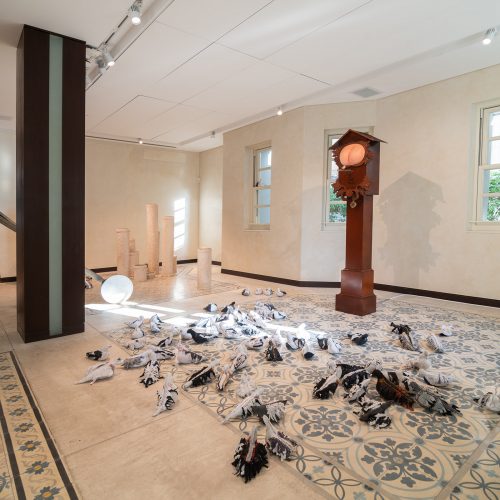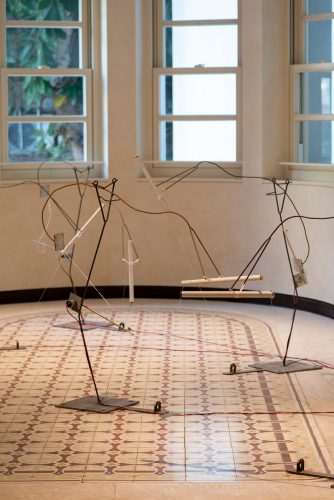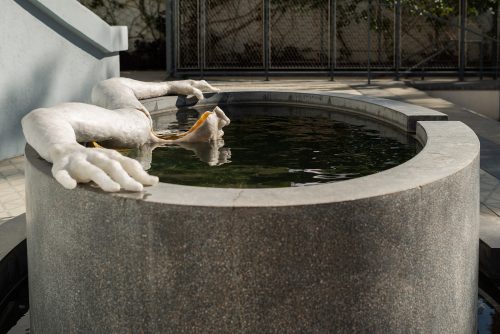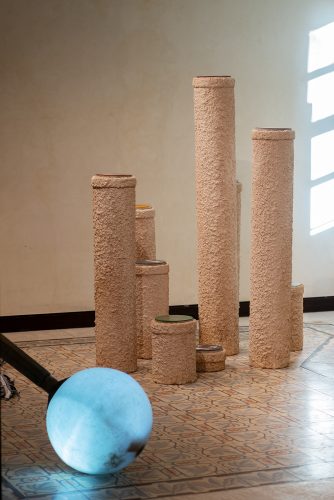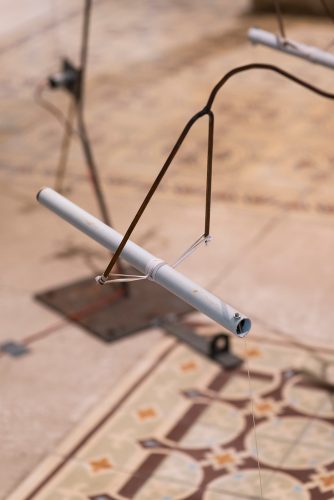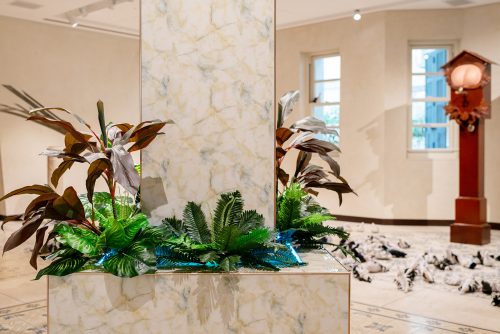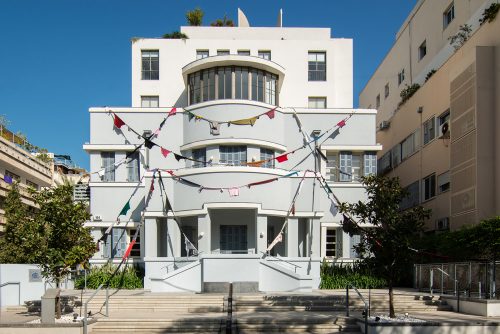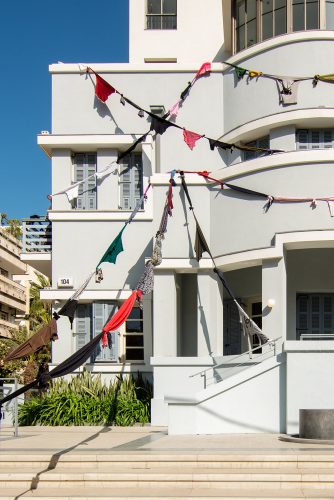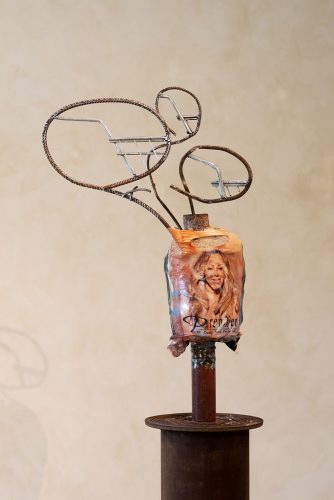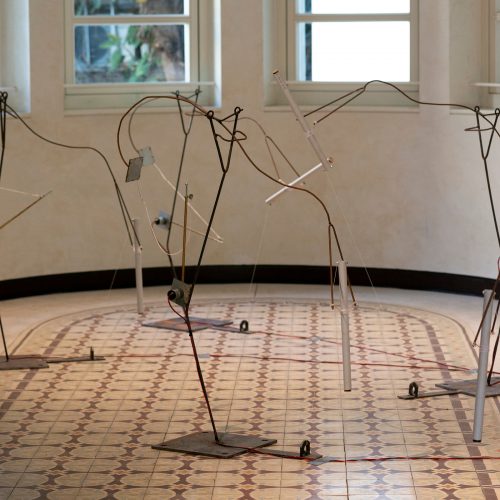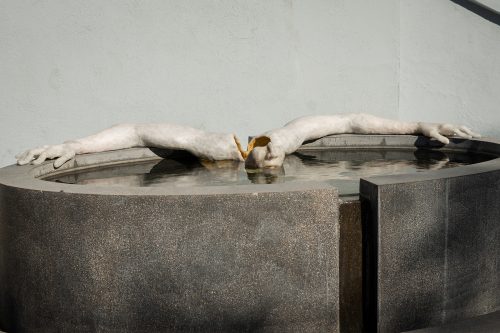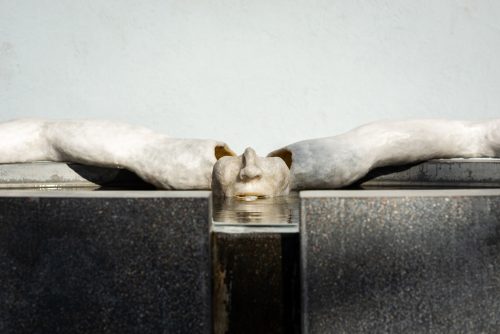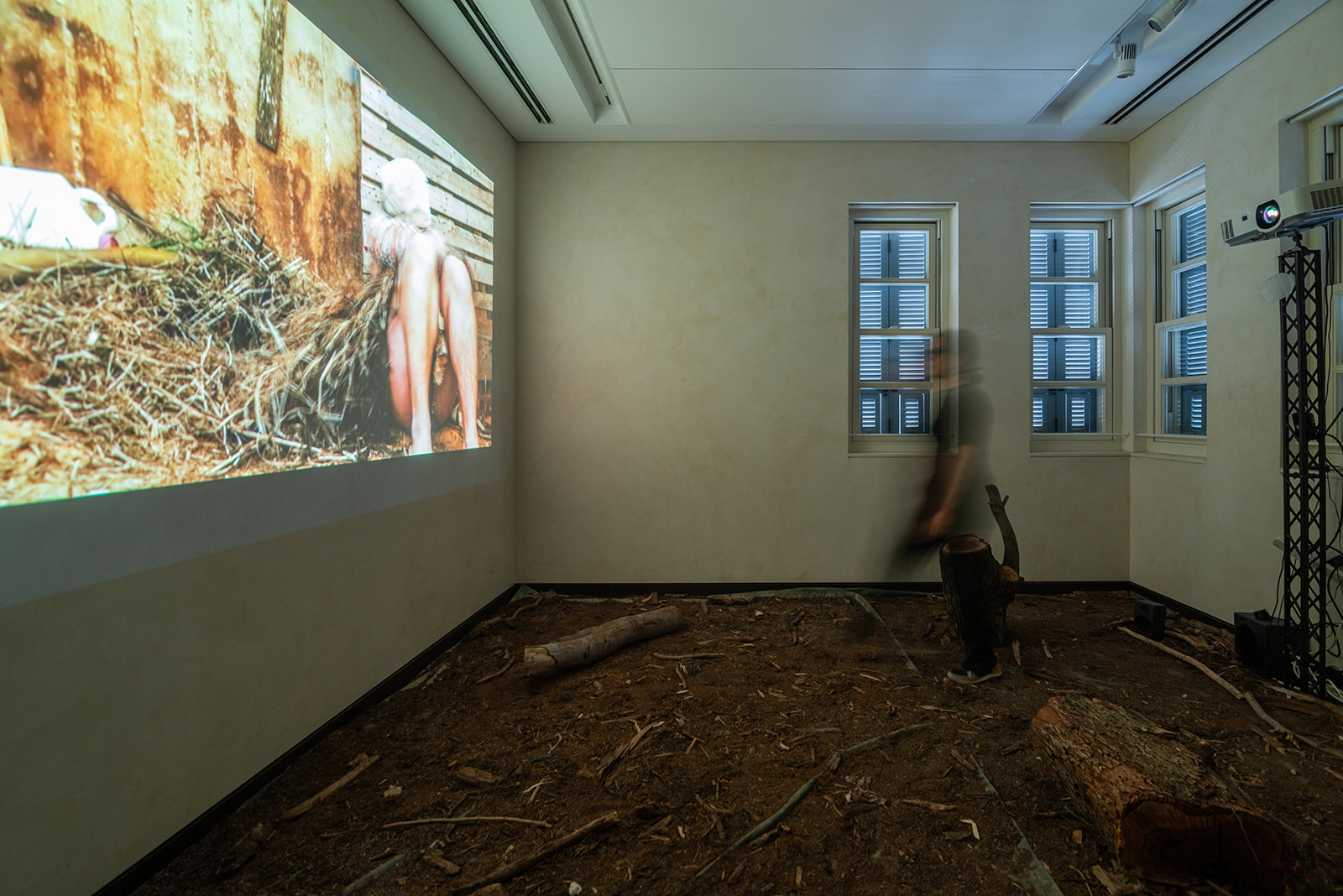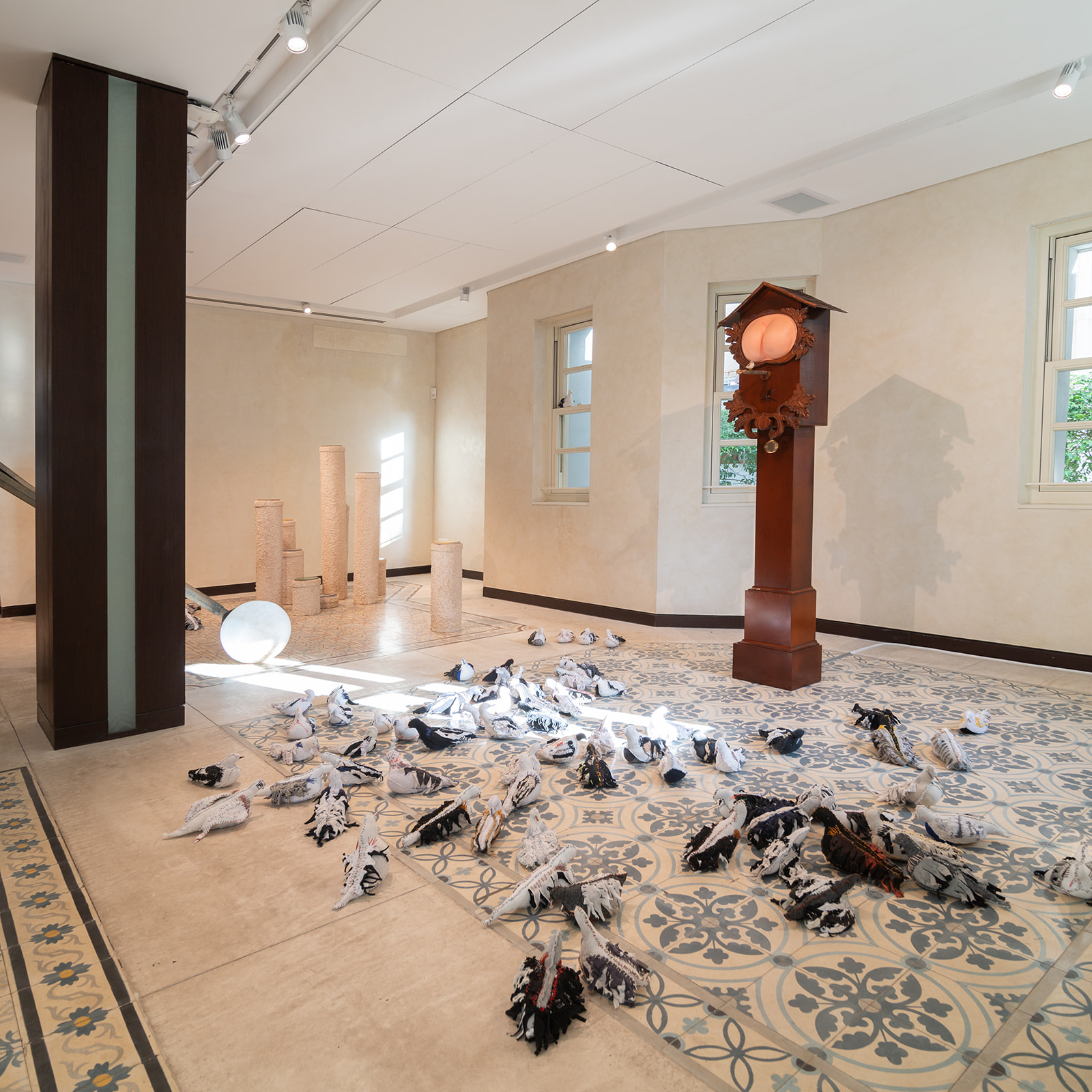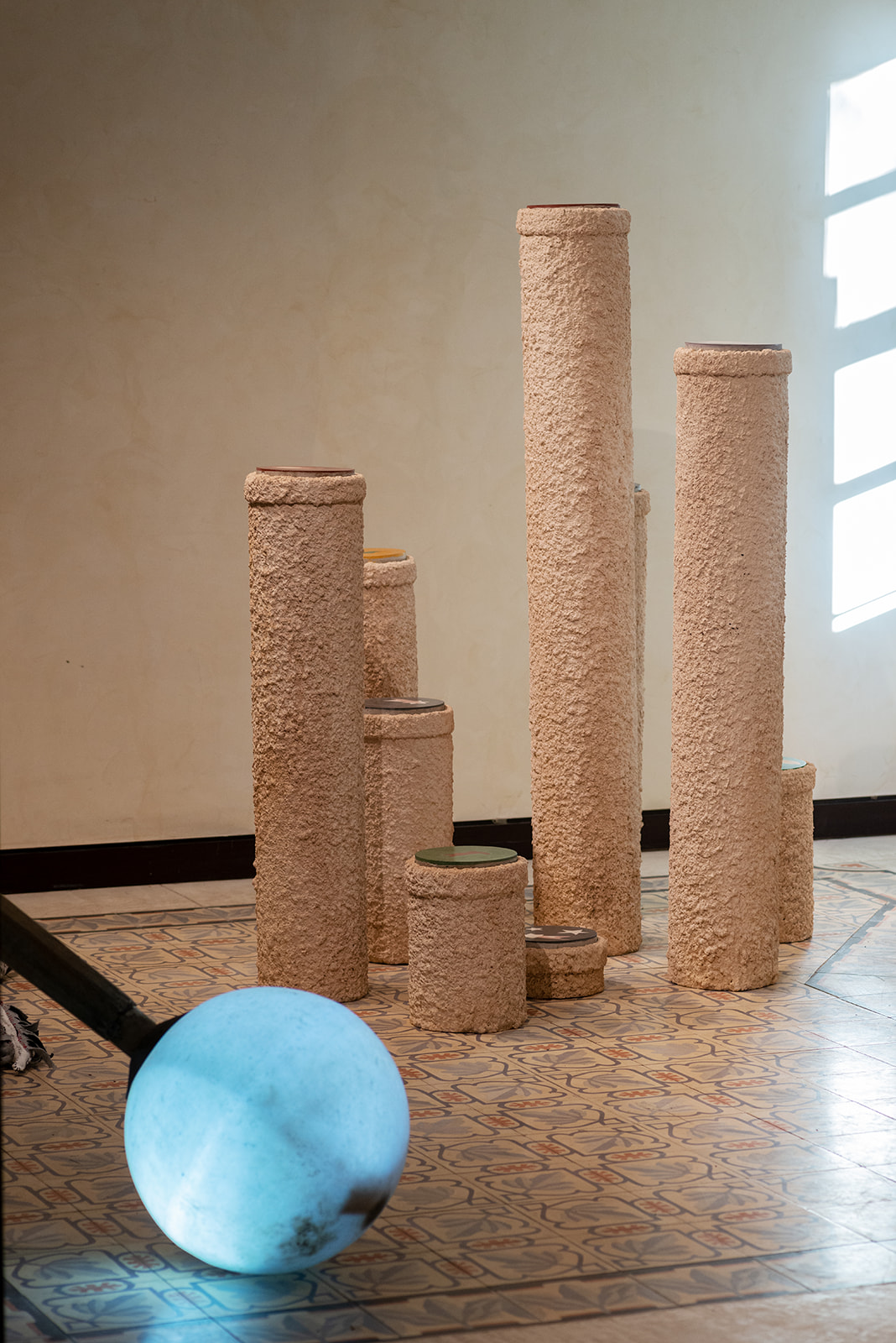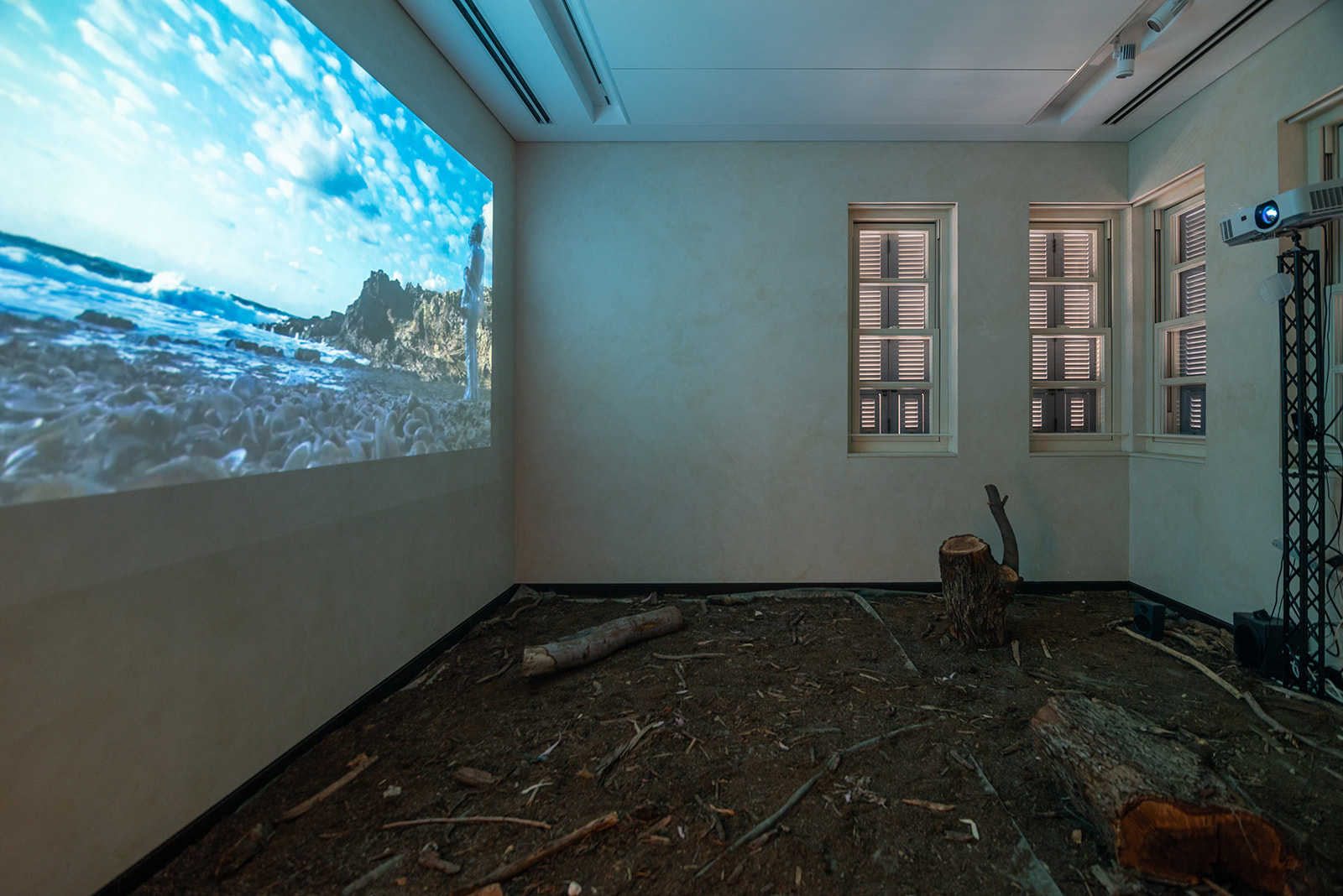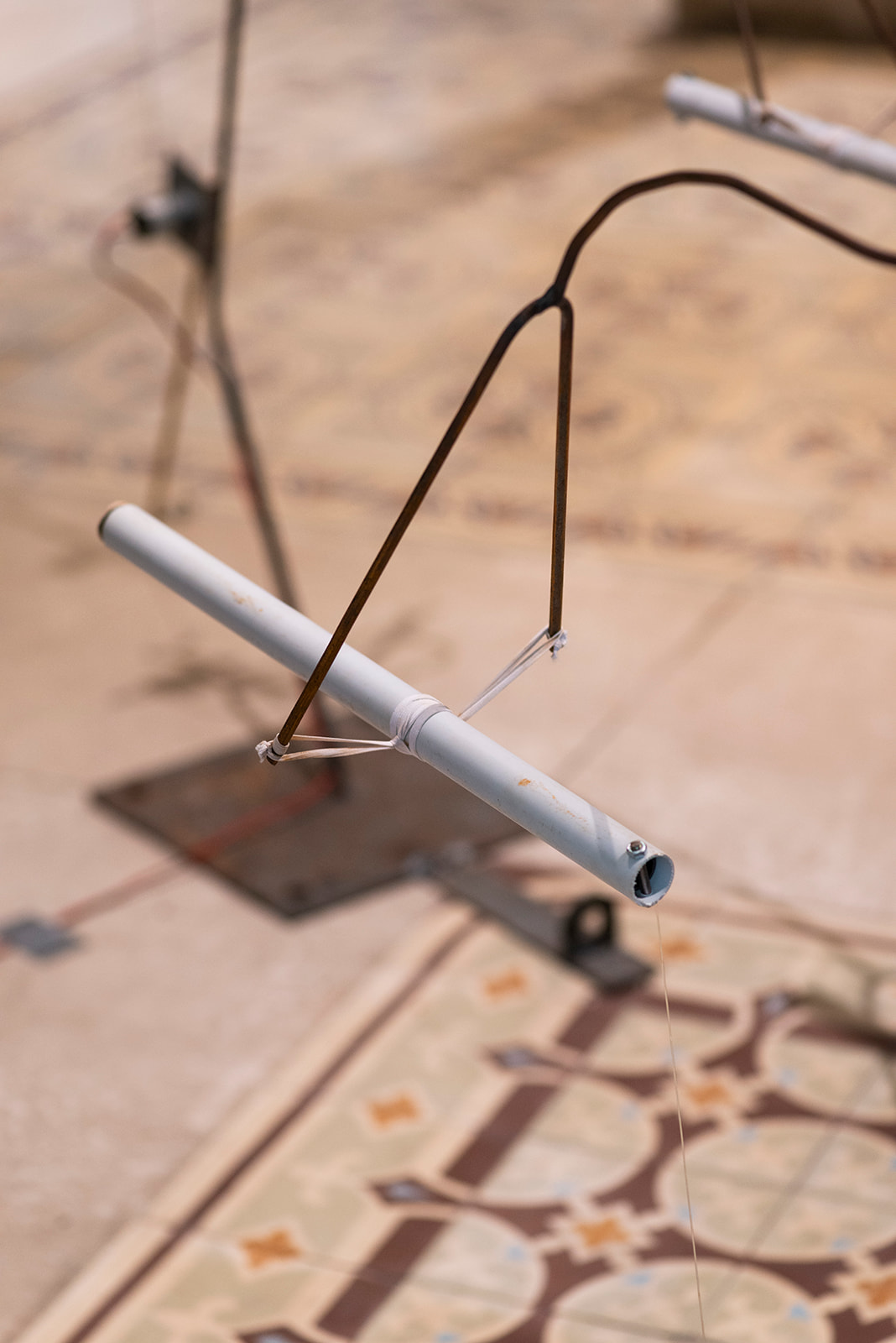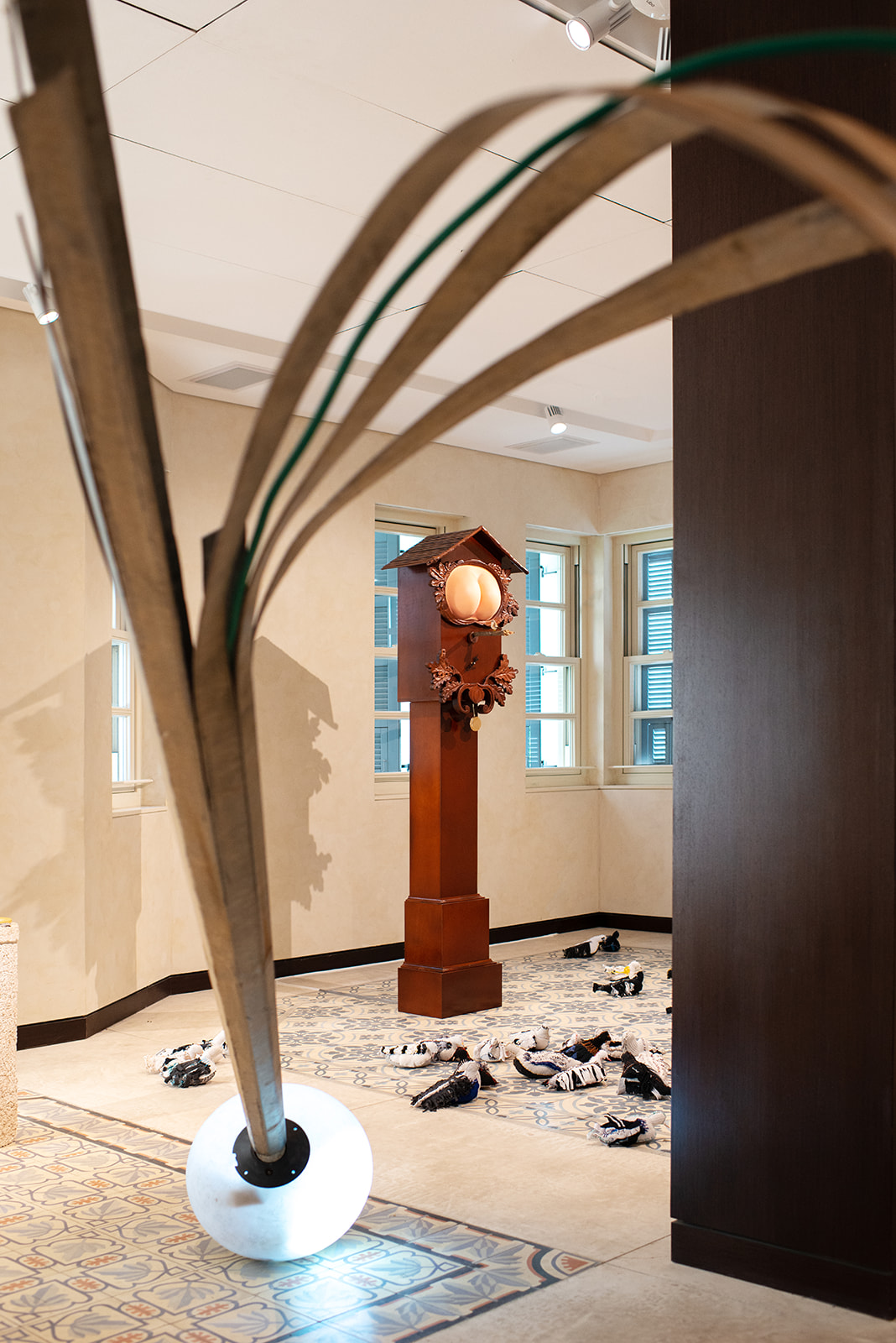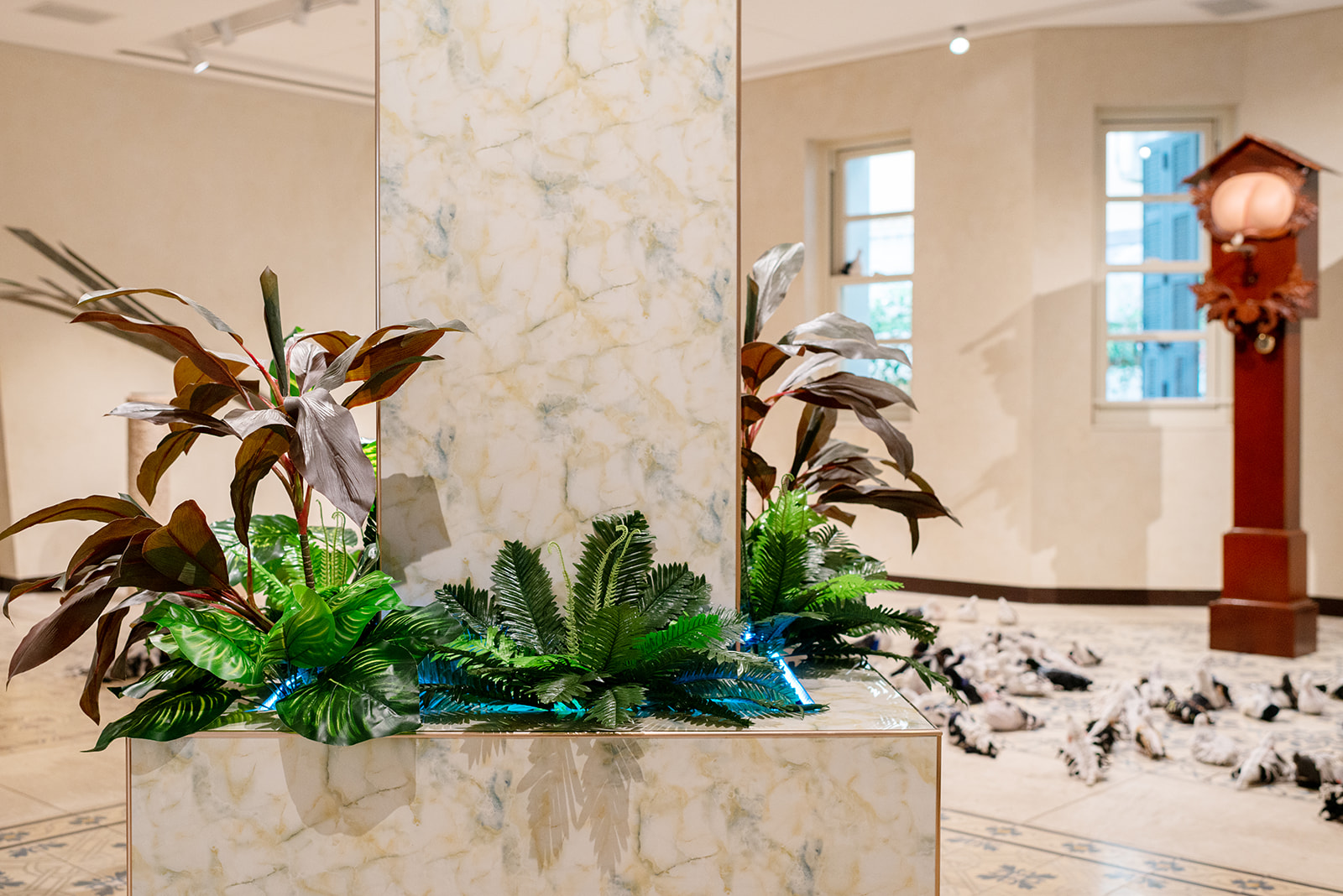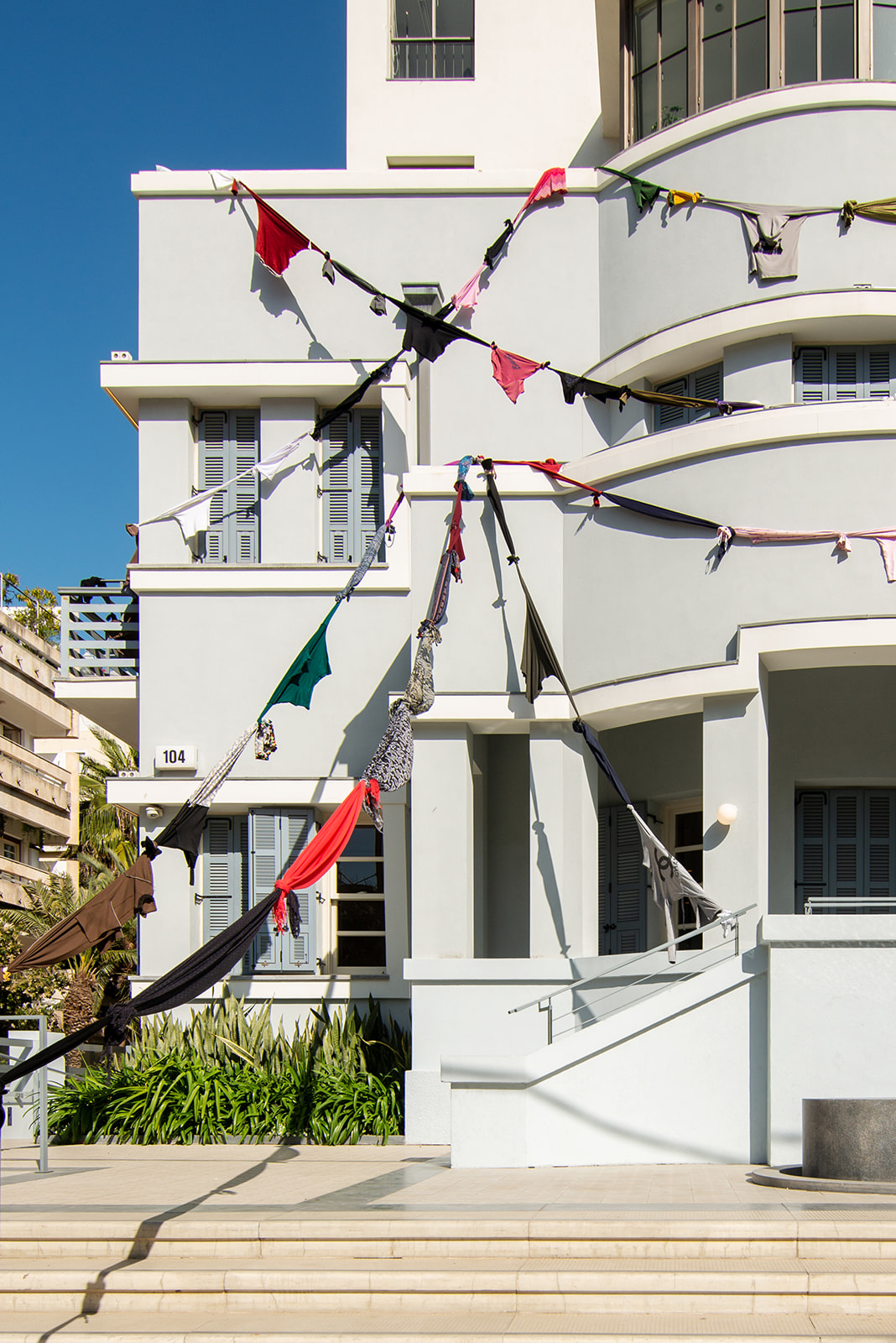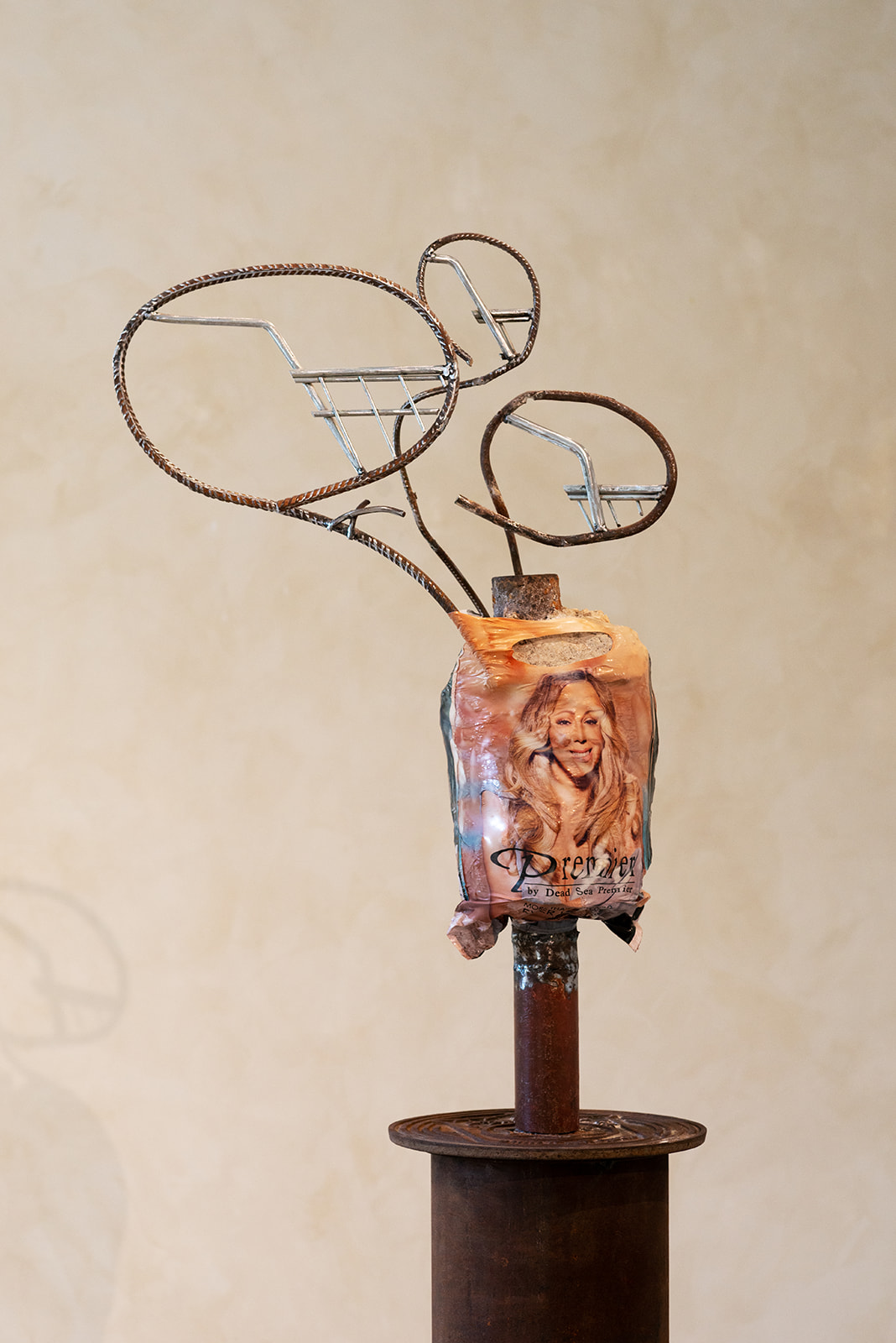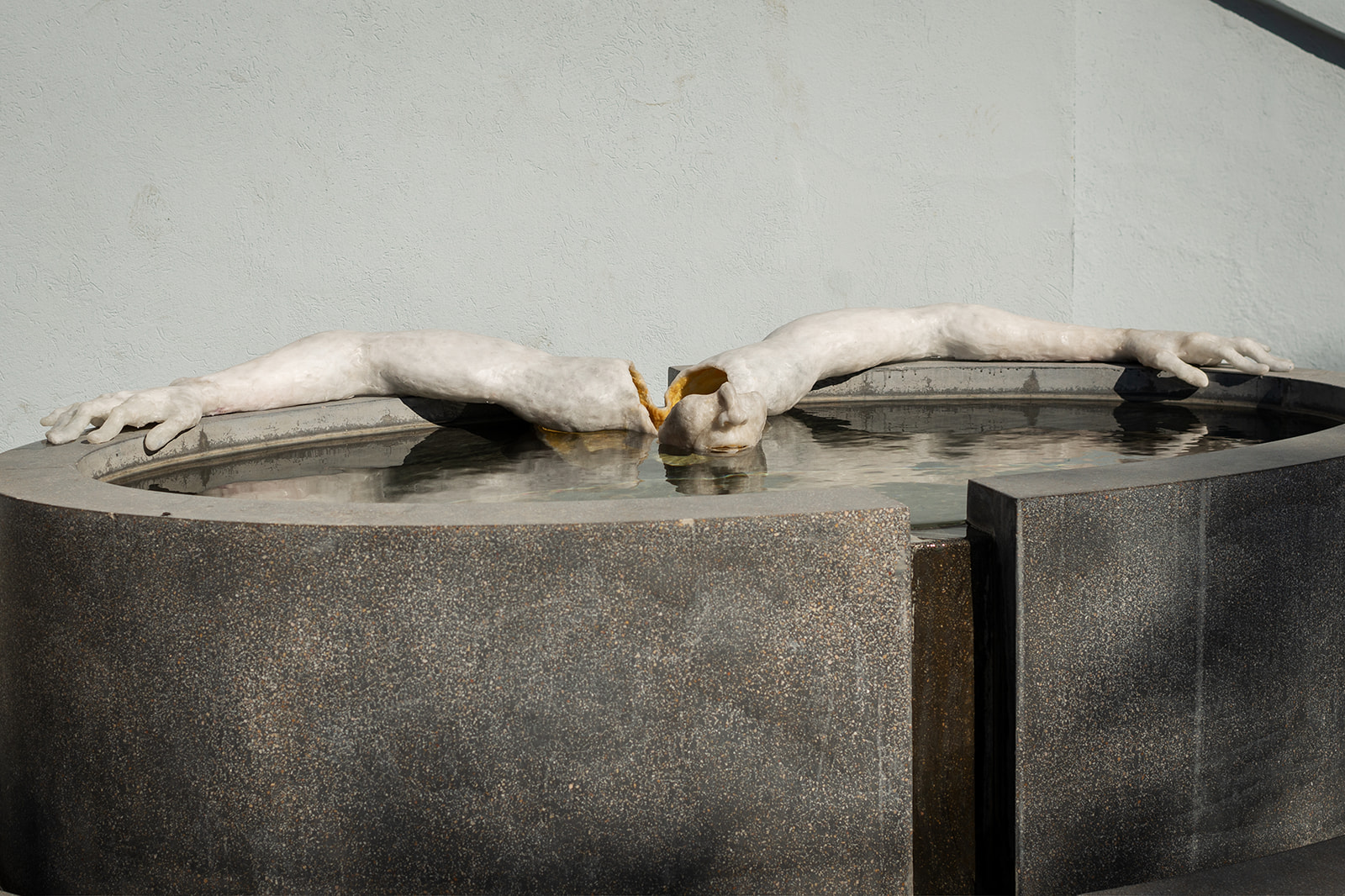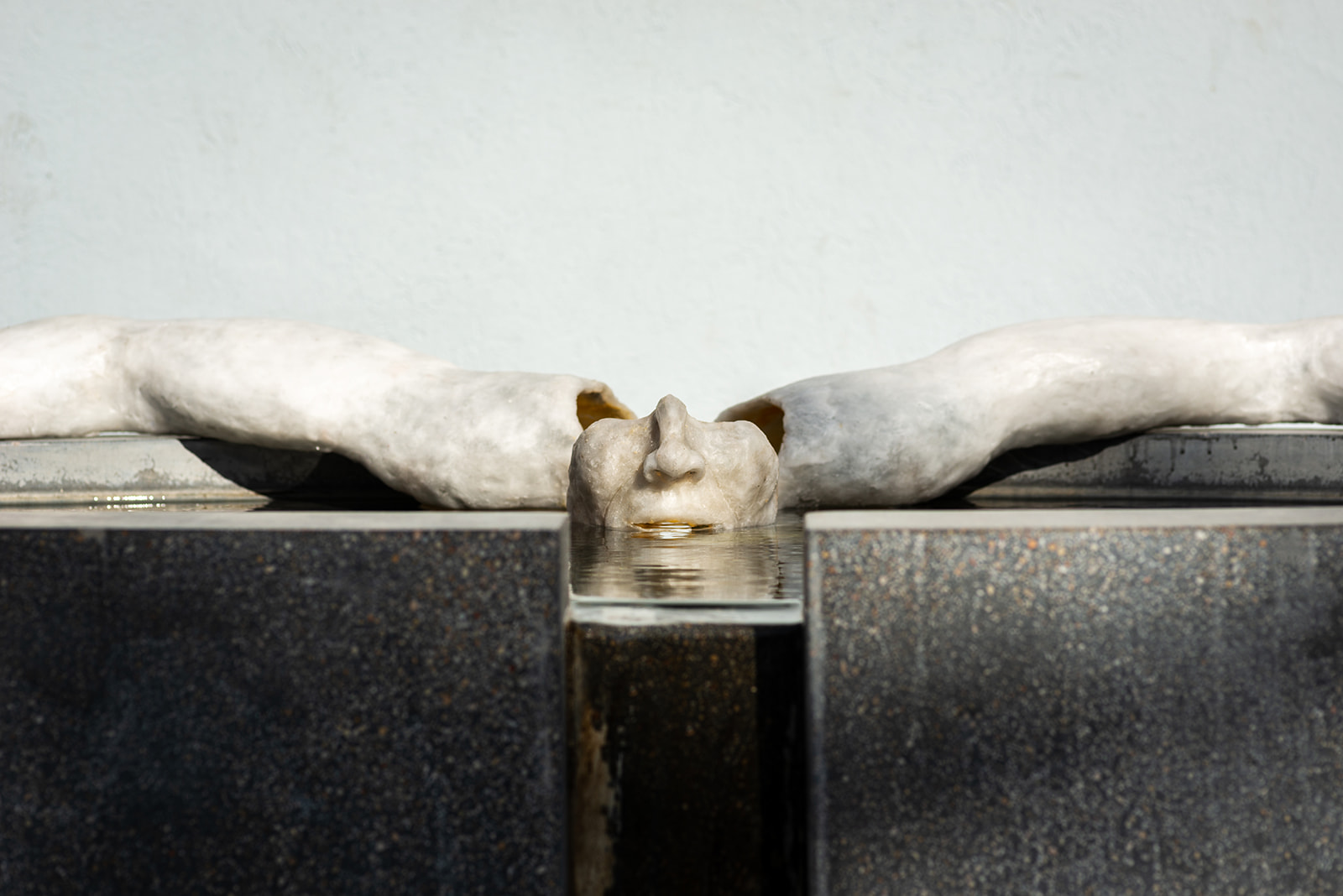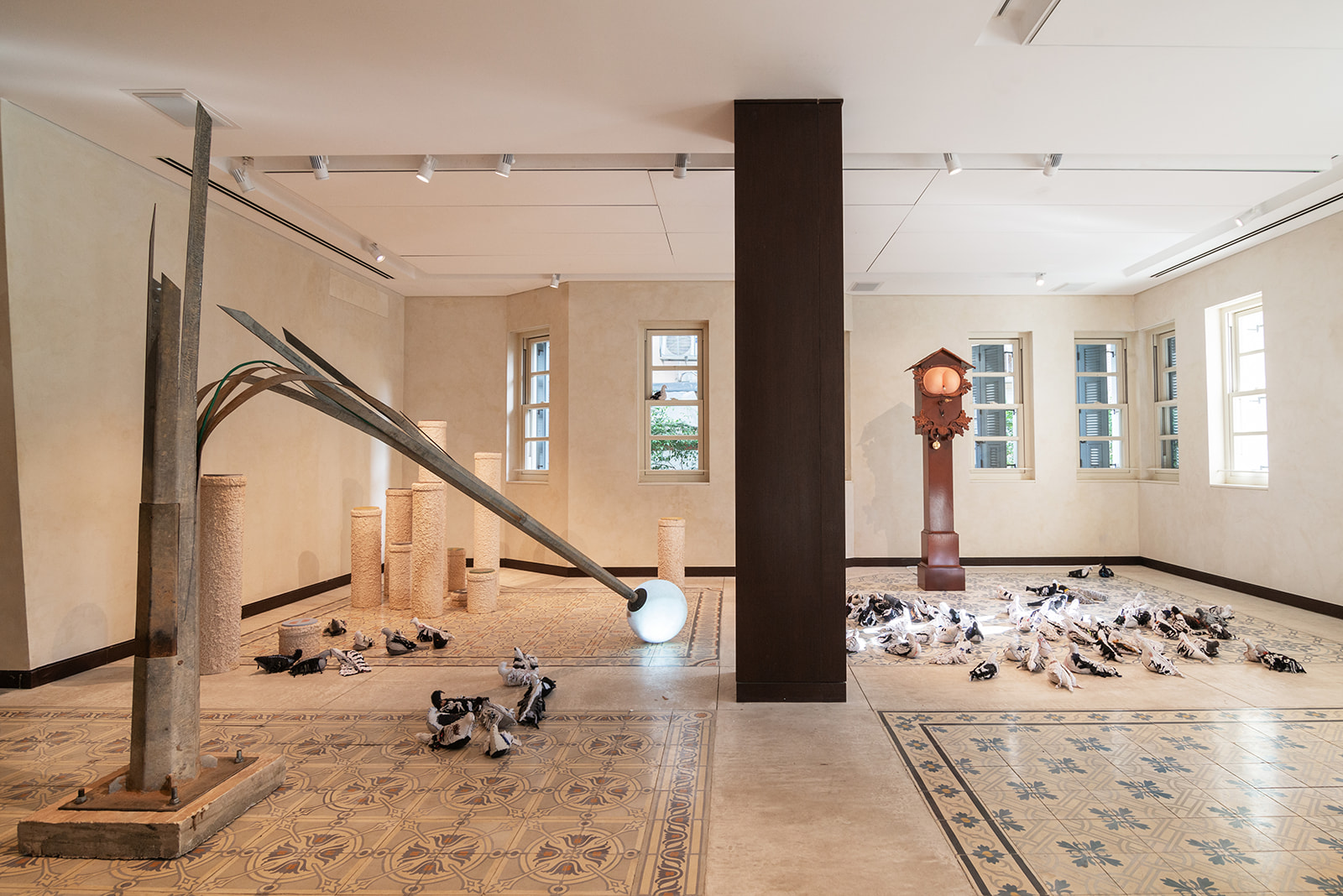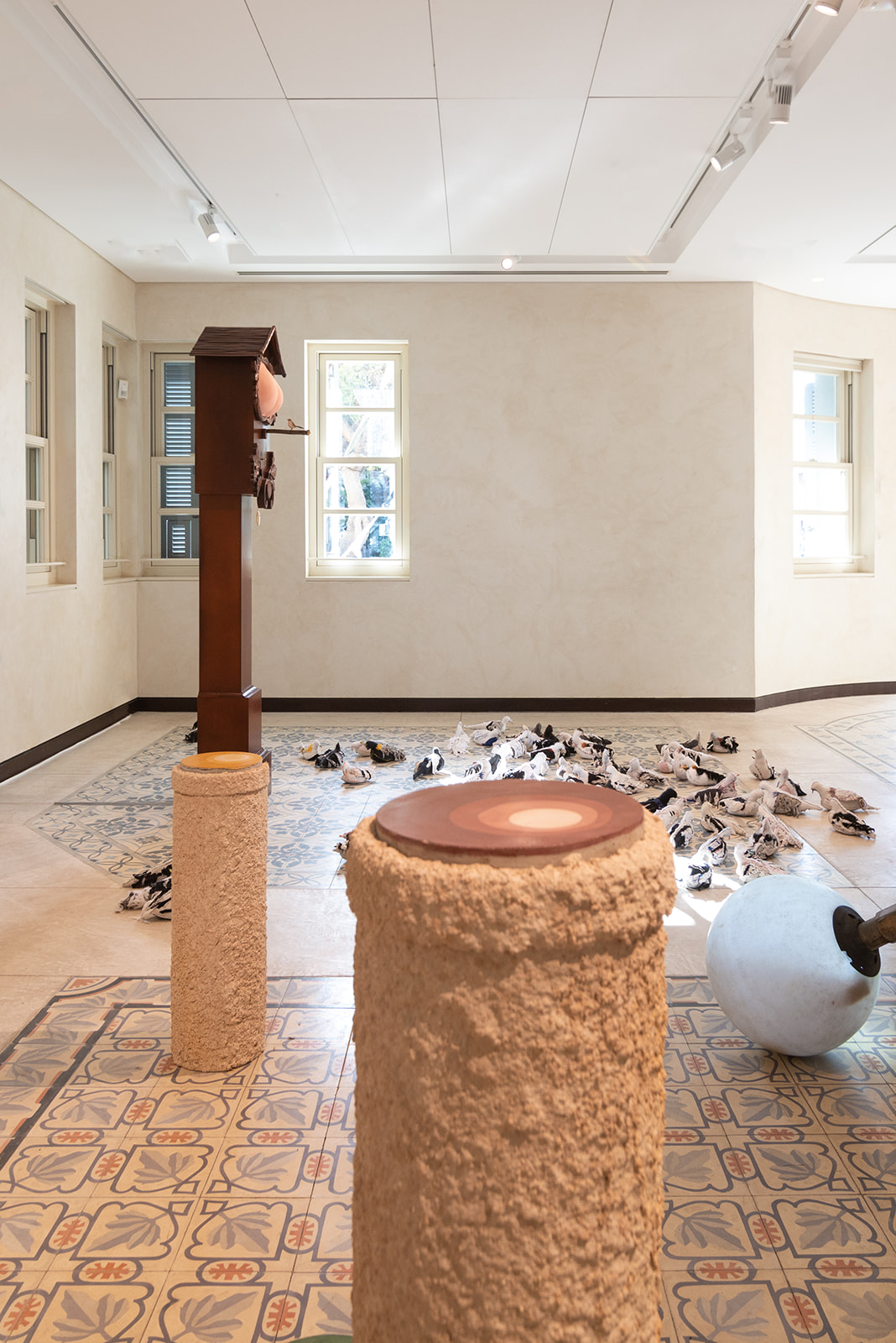Behind every dystopian fiction stands reality.
Dystopia as an artistic genre lays out a gloomy prospect for the human race. An imaginary future is interlaced with facts from our familiar past and present. In a reality dominated by oppression, scarcity and disease, under a totalitarian regime and/or in the post-apocalyptic aftermath of a disaster, the dystopian artwork calls attention to what it considers to be the flaws and wrongs of the present. It warns us of sociocultural disintegration, raises consciousnesses and calls for change.
The artists exhibiting in Black Rain operate in a reality whose outline forms the matrix from and on which dark dystopian scenarios crop up and grow.
The threat of climate change, the neoliberal capitalist economy, the dizzying pace of scientific and technological advancements, the growing social and economic inequalities, the restrictions on individual freedom together with a general state of anxiety and uncertainty — all of these find an expression in the works on display.
In his article ‘What Provides Science Fiction with its Critical Power? Three Levels of Voluntary Exclusion’, Jonathan Liraz considers how science fiction uses stratagems of estrangement, of which he identifies three main forms: basic estrangement (of the fictional work in relation to concrete reality), cognitive estrangement (the structural characteristics of the genre) and estrangement through subversion (the literary genre is perceived as inferior and thus allows for deviations from conventions).
Adopting similar practices to those of science fiction writers, the presented artists propose different forms of fiction that use distanciation from reality to better reveal or evade the forces of disruption swarming around them.
Seven works are displayed both within and outside the Edmond de Rothschild Center. In some of them, the relationship between form and matter can be interpreted as echoing events of collapse, distortion and destruction.
Other more concrete works offer allegory-like representations of the post-apocalyptic situations that follow disaster and devastation.
As if they were small islands in the ocean of the future, each work exposes in its own way a dystopian rhetoric that foretells extreme chaotic situations, occurrences of degeneration and downfall.
Sally Haftel Naveh
The exhibition features artists who have graduated in the last five years from the following art institutions: Bezalel, Jerusalem Academy of Arts and Design | Shenkar – Engineering. Design. Art. | HaMidrasha, the Faculty of Arts at Beit Berl College | Musrara, the Naggar School of Art and Education | The Faculty of Arts, University of Haifa
